#italian traditions
Text

Scissors symbolize cutting, separation, and liberation. Many cultures use scissors to cut hair, cloth, or paper as a symbolic act of letting go of the past or starting fresh.
They can represent the power to create, the ability to cut through obstacles, and even the transformation of the self. In italian witchery scissors have a main role in removing the malocchio, the evil eye, and in bringing new positive energies into the house.
#witchcraft#witchblr#witches of tumblr#scissors magic#magic basics#magical tools#babywitch#scissors#paganism#stregheria#italian witchcraft#italianwitch#strega#italian traditions#traditional witchcraft
75 notes
·
View notes
Text
If you are curious about how the Day of the Dead is celebrated in Italy, read here!
You may find similarities with your own customs 💕💕
#crimson talk#halloween#samhain#day of the dead#dias de los muertos#wheel of the year#day of the dead in Italy#Italy#Italian culture#Italian traditions
43 notes
·
View notes
Text
Every European kid asking why it's called “Palms Sunday” If we bless everything except real palms:
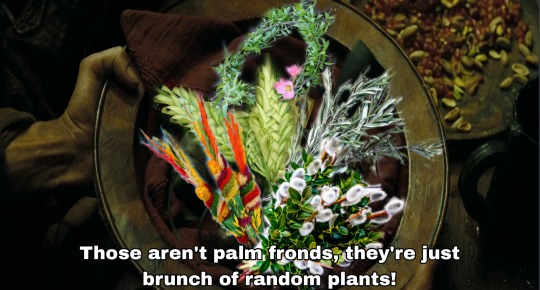

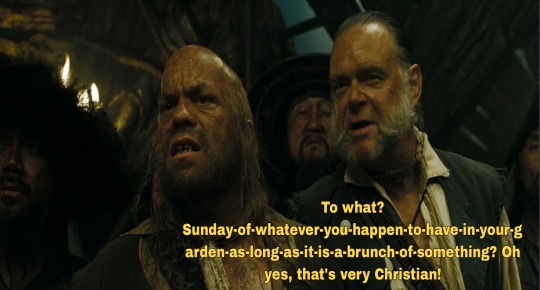
Palm Sunday is a Christian holiday. As you might have guessed from the name, it’s on a Sunday — always the Sunday before Easter. That’s because it’s meant to commemorate Jesus’ arrival in Jerusalem, a week before Easter Sunday.
However, plams doesn't grow up everywhere, so each Christian country adopted their own version.
In the memes I summarize some of the European traditions I know:
North Italy, Slovenia and Croatia: small olive branches are blessed and distributed to the faithfuls at Churches. In Slovenia there are also “butarica”, that is traditionally a bundle of greenery, flowers or colored wood shavings. In Ljubljana, they are made of colored wood shavings, similar to the Polish tradion illustrated below
South Italy: interweaving palm leaves
Germany, Austria, Finland and Hungary: pussy willow or catkin branches
Bulgaria: Willow twigs, something weaved into crowns with other flowers
Poland: the faithful bring to churches their own “palms” generally made from willow branches decorated with evergreen plants colorful and vibrant crepe paper flowers and green bilberry or juniper bushes affixed to the top of dried flowers and colorful dyed grasses.
Source: Pirates of the Caribbean: At World's End, 2007, dir. by Gore Verbinski
#vavuskapakage#palm sunday#pirates of the caribbean#Pirates of the Caribbean: At World's End#Pirates of the Caribbean meme#european traditional#european traditions#European meme#poland#italian traditions#hungarian#hungary#german things#germany#Austrian#austria#bulgaria#slovenian#slovenia#Croatian#croatia#finland#finnish#finnish things#italian things#christian trauma
14 notes
·
View notes
Text

Mars, The Roman God of War and Agriculture.
One of the supreme deities in Roman paganism, Mars is quite similar to Ares but they are not the same as Ares was seen to be mostly bloodthirsty and ruthless in battle personification of the concept of war himself. Mars is the God of the earth as well protecter of farming and securing order through acts of war. He was seen as second to Jupiter, it’s much later into the Roman Empire of which Mars became much warlike, defender of cities, and the borders. Mars is not describe being bloodthirsty in his attributes but rather he using violence to ensure peace in countries and communities.
I’m starting a little series of Roman deities and separating the misconceptions of Romans took everything from Greece. When in reality Romans had their own respected indigenous practices and gods with traditions. No doubt took a lot of influence but these deities are very similar but not the same. Also the Romans like to merge and identify other peoples gods with their own, for example they saw Diana with Artemis when conquering Germania Caesar claim “they worship the god Mercury” he is clearly talking about Odin in this context but identifying the gods with their own.
10 notes
·
View notes
Text


#witchcraft#witchblr#dark magic#witch#lilith#witch community#witches#grimoire#moon#occult#stregheria#strega#stregoneria#italianwitch#italian traditions
5 notes
·
View notes
Text
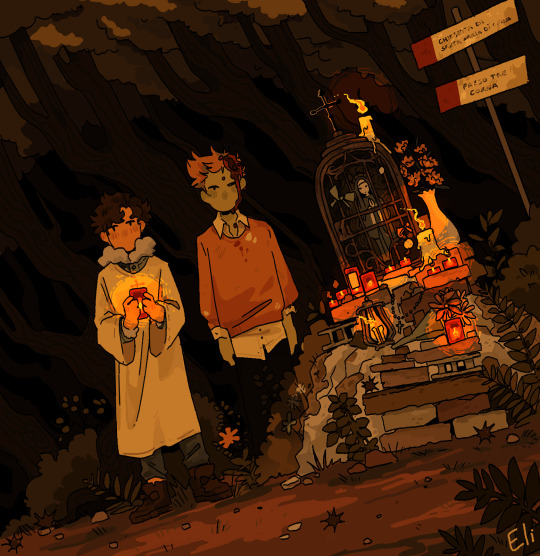
Idk how to translate this in English but “the day of the dead” november 1st
With Laura and Leonardo being silly
#illustration#ocs#original character#digital art#italian traditions#i think they’re silly#day of the dead
3 notes
·
View notes
Note
Thank you for the answer! I wonder if italians (italian parenrs?) normally cook for the family and what homemade dishes are considered usual apart from pasta?
It depends, every family has its own possibilities and traditions: sometimes is grandmothers cooking (and this especially on weekends/sundays) and especially for nephews during the week (grandparents, for families who can have this blessing, are often those in charge of taking/picking up kids to/from school); sometimes it's parents too... but honestly they generally work the whole day during the week, at least most of them, so they don't have much time to cook nor really can always pick up kids from school (that's why we have afterschool: kids of the first school grades can eat at school, spend there a few hours in the afternoon doing homeworks with their teachers until their parents or someone can go pick them up. High schools students generally don't have this chance. I'm not even sure about all middle schools tbh).
We may opt for cooking the evening before, going out to bar/restaurants, ordering food from delivery... let's not forget university students: many live far from home in shared apartments: they are in charge to cook for themselves (maybe they take turns, if everyone can cook). Some universities though do have their canteen that stays open in the evening as well. You need to be lucky though (same as for workers who can enjoy a canteen inside their workplace).
Homemade foods are again very different and similar to those you can find in restaurants and I mentioned in the other post. They also depend on the area we live in (each Region has their more specific traditions and commons foods, even street food, e.g. in central/southern Italy and northern-west is easier to find fish in traditional and common dishes; some type of meats are more common in some areas compared to others...), and on personal tastes. Ofc for the same reasons I explained in the other post (time/need to work also after lunch) we rather prepare food that cooks more fast, and wait for the weekend to eat more elaborate stuff. But again, it depends on how much time we have to dedicate it.
Pasta/rice, escalopes with white wine + green salad + fruits can be an example of a complete lunch, but not all of us decide to/can have it. But it depends from family to family. It is kinda personal.
#it#italian#italiano#langblr#italian language#italian langblr#language#italian food#italian dishes#italian things#italian stuff#italian traditions#italian foods#italians#italianblr#italian culture#traditions
22 notes
·
View notes
Note
Feliz día de Reyes! 👑✨👑✨👑✨
Auguri Buona Epifania!
I hope you behaved and Befana brought you presents yesterday/Today!
5 notes
·
View notes
Note
Hey! Hope you’re having a good Christmas in Italy!! I was just curious if there were any unique or interesting traditions you do for Christmas, or if Italy does much different compared to other countries you’ve been to :] I’ve been traveling around Europe for the past week, and am so surprised at how ‘Christmas-y’ so many things are! It’s beautiful, honestly
Oh cool, where are you from? I hope you're enjoying Europe, it's a very rich continent, you can find tons of amazing stuff. I may be biased here, but I think Italy is one of the best countries to spend your holidays (not working life), it's a magical place. And yes, most European countries go hard on Christmas, both for traditions and consumer/capitalistic reasons.
Sticking to traditions, in Italy we have so many it's hard to count, and it varies a great deal depending on the region. Despite being a relatively small country, Italy is a mosaic of very different regions with unique customs, views, and personalities. In Christmas, these distinctions are especially reflected in the food and when's the main celebration (ex. Christmas Eve or Christmas day). In general, it's a Christian holiday, so many common traditions include the Midnight Mass, preparing the Nativity Scene, and sticking to fish dishes for Christmas Eve. We have Santa Clause bringing gifts, but many regions (and even cities) are more faithful to other religious symbols, like Baby Jesus, or even local patron saints (for example in some places the gifts come with Saint Lucy on the 13th of December). Another widespread, typical tradition is the "Befana": a witch that comes on the 6th of January to bring gifts and candies to good kids and black charcoal to bad kids. This one is especially interesting to me because it's a vestige of our heathen past.
My family is not religious, so we are content in celebrating together with the relatives in a big dinner on Christmas Eve, and a big lunch on Christmas day, with family friends this time. On both occasions we exchange gifts and everyone brings some food, usually fish-based on CE, and meat on the 25th. We eat, drink, and do some board games together, or other fun stuff like karaoke. During high school I used to run to the local church after the Midnight Mass to greet my friends and bring them some mulled wine, but now everyone lives so far away those little traditions are a thing of the past. 🥲
2 notes
·
View notes
Text
Timballini with Crepes, Artichokes and Burrata Cheese
Time for recipe testing: let's prepare some timballini with crepes artichokes and burrata cheese. A bundle of crepes' layers... so delightful!

View On WordPress
#easy recipes#holiday recipes#italian flavors#italian traditions#sara scutti recipes#vegetarian recipes
0 notes
Text

Italy lore
#aesthetic#italy#mediterranean#car#italian traditions#padre pio#only in italy#dirty car#mum#cozycore#cozy aesthetic#italy aesthetic
1 note
·
View note
Text
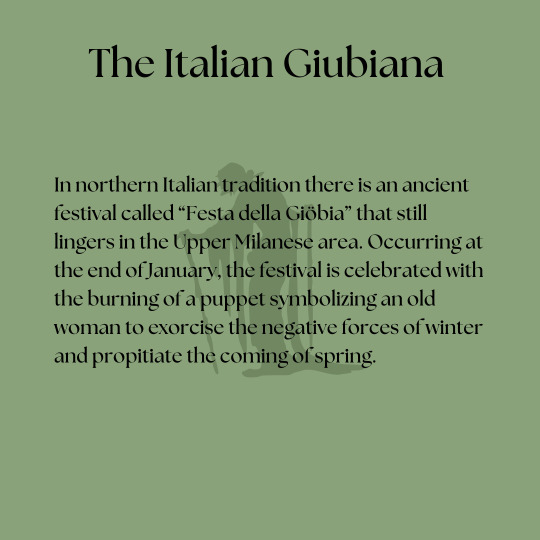
According to the folktale, the Giubiana was an old witch, thin, with very long legs and red stockings. She lived in the woods and because of her long legs, she never set foot on the ground, but moved from tree to tree. On the last Thursday of January, she used to go in search of some children to eat. One mother, to protect her child, decided to set a trap for her. She prepared a large pot full of yellow (saffron) risotto with luganega (sausage) and put it on the windowsill. The Giubiana attracted by the smell, came out of the woods, and began to eat all the contents of the huge pot. The risotto was so good that the ravenous Giubiana did not notice the time passing. She did not notice that the sun, which kills witches, was now about to rise. By the time the Giubiana finished all the risotto, the first ray of sunshine had come out: the Giubiana was thus pulverized by the sunlight, and from that day all the children were saved. To remember that event at the end of January, risotto with luganega is prepared and the puppet in the guise of the old witch is burned.
The name "Giubiana" seems related to the Roman god Jupiter, but other possible reference figures are Juno, Janus, and Diana.
In the medieval centuries the popular narrative created a variety of legends and numerous folk tales, in which Giubiana thus became a female figure alluding to the Great Mother, sometimes an old woman, sometimes a witch, a variant of the Befana, to be symbolically driven away along with the rigors of winter. The most distinguishing element of the festival is the great bonfire, which even today is perceived by all as a symbol of renewal and a new year's restart.
#witchcraft#witchblr#italianwitch#italian folklore#strega#giubiana#italian traditions#paganism#witches of tumblr#winter spirit#italian witchcraft#pagan witch#great godess#old witch#bonfire#renewal#italian tales#northern italy
30 notes
·
View notes
Text

Cavallucci; Family moment during Christmas time leading to tiny, sweet happiness.
#italian traditions#homemade sweets#homemade#family time#christmas#christmas traditions#we made kind of 92 of these guys#love them
1 note
·
View note
Text



La Barcolana – ⛵️
Trieste, Italy – October 2023
#my post#la Barcolana#trieste#italy#boats#sea#sea photography#italian sea#friuli venezia giulia#italian traditions#blue#fall#sea in autumn
1 note
·
View note
Text
Raphael, Portrait of a Lady with Unicorn
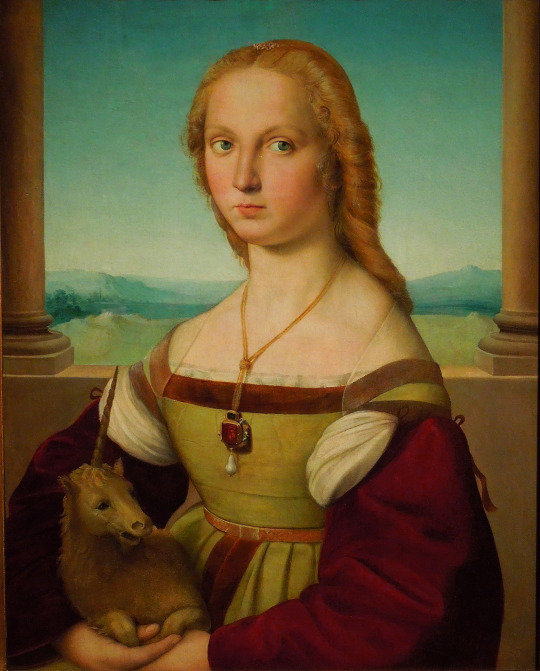
#traditional art#traditional painting#classic art#art history#art detail#art details#art#oil painting#19th century art#classical art#arte#raphael#rafael#renacimiento#renassaince#italian art
648 notes
·
View notes
Text

Giuseppe Mentessi (Italian, 1857-1931)
Pace, 1907
Museo dell'Ottocento
#female portrait#european art#italian art#southern europe#mediterranean#woman#flowers#spring#giuseppe mentessi#italy#italian#oil painting#female#portrait#painting#classical art#traditional art#christian
2K notes
·
View notes